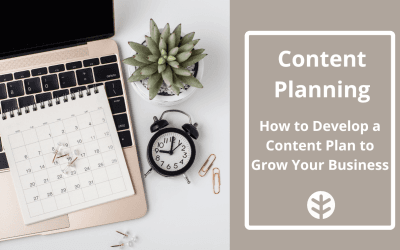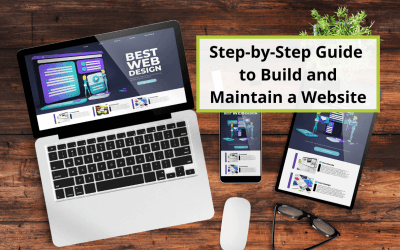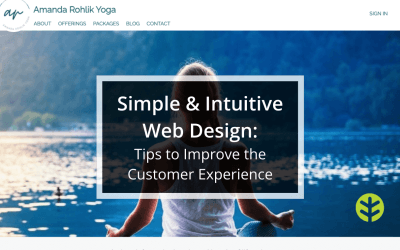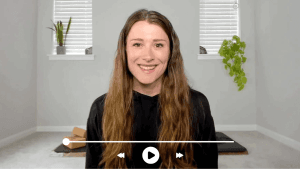A landing page is an effective tool for targeted marketing efforts. By creating a web page dedicated to and optimized for a specific audience and goal, you can directly promote a special offer, event, product, or service. Well-designed landing pages make it easy for visitors to learn about the offering and convert through interactive elements like order forms.
In this article, we’ll explore what you need to know about landing pages for your business – including the parts of a landing page and how they work together, five keys to building an effective landing page, and how to get people visiting your landing page once it’s live on the web.
Table of Contents:
- Unpacking the Importance of a Landing Page
- 5 Keys to Success: How to Design a Landing Page That Converts
- How to Get Traffic to Your Landing Page
Unpacking the Importance of a Landing Page
A landing page is similar to a website home page in that it is an online location you want people to visit, engage briefly with you/your brand, and become your loyal customers. The critical difference between a home page and a landing page is focus.
While the homepage of your website has a broad focus and invites visitors to explore the rest of the site, a simple landing page is a single page with a single focus: to convert online visitors into prospective customers or leads.
So, what makes a good landing page? Good landing page content is free from clutter and distractions, usually having no links to external pages or reasons to click away for more information; just one page with one action for the visitor to take and enough supporting information for them to take that action confidently.
Your basic brand imagery, a simple description of your offer, and a strong Call To Action (CTA) that prompts the visitor with one thing to do can provide any number of benefits to your business:
- Grow your mailing list
- Reach & engage new customers
- Deepen relationships with existing customers
- Promote an offering, product, or event
- Gauge interest in new services
Curious to See How OfferingTree Stacks Up Against Other Page Builders?
See how we compare to Wix and how we compare to Squarespace.
5 Keys to Success: How to Design a Landing Page That Converts
Creating an effective landing page is both an art and a science, a quiet personal experience and a powerful business tool. It is a member of the website family, yet it is a unique creature. Where do you start?
In this section, we’ll explore the five essential keys for designing a landing page with the best chance of turning casual visitors into valued customers.
1. Critical Landing Page Elements
Like any great recipe, the core landing page components are simple and few but powerful. As mentioned earlier, unlike an entire website, a landing page is designed to get your visitor to take one action and one action only (with the information they need to take it confidently).
How long should a landing page be? Not long. Ideally, a visitor can see everything on one screen without scrolling down. Keep things simple with your landing page structure. Start with a landing page outline (we’ve compiled it for you below), then use landing page creation tools to build it out.
- Title: The title should be clear and descriptive and communicate the primary purpose or focus of the page in just a few words.
- Visual Elements: Apart from making the page look nice, a few relevant images or videos can build a sense of trust, tangibility, and value around your offer.
- Content and Copy: Targeted copy, aimed directly at your desired audience, should give your visitors context, reasons, and interest to take action.
- Offer: The star of the show — a single offer for a product, service, or discount, clearly and simply explained, that is exclusively available on this landing page.
- Call-to-Action (CTA): CTAs prompt visitors to take action, like filling out a form. Effective CTAs use clear, compelling language and are easy to find and click on.
There is no one universal anatomy of a landing page; you can always add more elements. If you do, be sure to ask yourself if they simplify and support the experience for the visitor or clutter and complicate it. If it’s the latter, save the content for your website.
2. Design with Your Audience in Mind
Like your physical studio space or website, an effective landing page should be a welcoming, easy-to-navigate introduction to your brand and business. Here is a great place to apply some website design best practices, keeping a few landing page-specific things in mind.
Understanding your target audience is crucial when marketing wellness services in general, but it requires an extra fine point on your landing page. Since the experience and focus of a landing page is so narrow, it’s important to ask yourself the right questions to determine the design approach that will resonate most strongly with your visitors:
- Who is going to be visiting your page?
- What motivates them?
- What kind of experience are they expecting?
- What kind of experience do you want them to have?
Once you have these questions answered, you can more easily tailor the design of your landing page to your target audience (remember, the best landing page designs are simple):
- Use images and testimonials that represent your target audience.
- Offer a relevant service or product your audience wants.
- Align your messaging with your audience’s values.
- Optimize for mobile, readability, and accessibility.
- Present a clear CTA that is easy to find, fill out (if a form), and click/submit.
3. Social Proof & Building Trust
More than most industries, personal testimonials, and reviews – also known as “social proof” – in the wellness space are powerful assets in winning the trust of potential clients (and deepening loyalty with current ones). When people see others recommending a service, teacher, or studio, they feel more confident giving them their business.
Suppose you already have online reviews or personal testimonials from existing clients. In that case, these can be powerful trust-building elements to include on your landing page – like a wheatgrass shot of confidence to take action. Here, authenticity is vital. Quotes with the names of the real person who provided them are powerful. A picture of the person, even more so. A video testimonial is possibly the most.
Here are some additional insights and tips for using social proof to support a high-converting landing page:
- Spotlight relatable client stories describing positive experiences and transformations.
- Video testimonials showcase authenticity through body language, tone, and emotion.
- Display ratings and reviews from review sites like Google and Yelp (with links)
- Feature logos of any certifications, accreditations, or community endorsements.
- Prioritize recent, relevant social proof – old reviews, even good ones, can have the opposite effect.
If you don’t have reviews or testimonials yet, don’t worry! You can make a landing page to solicit honest reviews in exchange for a promotion or discount.
4. Choose the Right Page Builder
Of course, we don’t expect you to build a landing page out of thin air. Lucky for you, there are several user-friendly page builder options available. That said, we recommend building your landing page through an all-in-one wellness business management software, like Offering Tree – especially if you already use it.
Using the same platform to build your landing page as you’ve used to create your website and other marketing materials allows for a seamless experience of your business for your current and future clients.
It’s also incredibly valuable on the back end. Having all your web content on one platform helps you understand your clients, maintain better communication, and ensure all your tools work together seamlessly (as opposed to multiple, sometimes incompatible, platforms).
Here are some factors to consider when selecting the best landing page builder for your needs:
- Ease of use: A builder with an intuitive drag-and-drop interface that’s easy for non-technical users.
- Template variety: Look for template options that work with the look and feel of your business.
- Built-in forms: Opt for a builder with integrated forms that feed data to your CMS or email.
- Analytics integration: Choose a builder that offers insights into traffic sources, conversions, and behavior.
- Mobile responsiveness: Ensure the landing pages are optimized for mobile devices (up to 50%+ of visitors).
5. Optimize for Conversion
The success of your landing page is based on its conversion rate, and the conversion rate statistics can vary. It’s good to set your sights high and follow the best practices outlined here for a high-converting landing page, but it’s essential to know that these numbers generally tend to be low.
For national or multinational companies that could have as many as 40 different landing pages, landing pages typically have a conversion rate of about 2.35%. Depending on the industry and offer, small business landing pages can range from an average of 2-5%.
Once you’ve launched your landing page, set a realistic conversion goal, monitor your conversions, make adjustments, and repeat. But what adjustments should you institute? Here are a few strategies for increasing conversion rates:
- Offer “lead magnets” like free trials, coupons, or resources in exchange for contact info.
- Ensure forms are short, easy to complete, and mobile-friendly.
- Improve page speed and user experience. Faster load times (less STUFF to load) and simple navigation convert more visitors.
- Perform A/B testing to see which page versions convert best. Test elements one at a time, like calls-to-action, headlines, images, and layouts.
With testing and incremental improvements, you can achieve substantial conversion rate increases over time (remember, that can be just one percentage point). The key is continually optimizing based on accurate data and customer feedback.
Want to Get More Qualified Traffic to Your Website?
Download our Local SEO Checklist for Small Businesses to attract more of your ideal customers.
How to Get Traffic to Your Landing Page
There are multiple roads to drive traffic to your landing page and several content creation tools to keep the journey smooth and consistent.
We recommend a multi-channel approach to promoting your landing page. Combining social media, search engine optimization (SEO), email marketing, in-person promotion, and other marketing strengthens your brand, increases visits to your landing page, and boosts your conversion rates.
- Social media builds awareness and relationships with your target audience. Share your landing page link, promotions, and content on active platforms; encourage social sharing.
- SEO keeps your page ranking high in search engines looking for relevant keywords. Optimize your landing page with strategic keywords.
- Email marketing provides a more personalized outreach to current clients. Send dedicated emails promoting the new offer, free trial, or service featured on your landing page.
- Consistency in branding and messaging across channels improves recognition and conversions. Use the same color palette, logo placement, voice, and style.
Easily Build Beautiful Landing Pages with OfferingTree
We wouldn’t be offering you all this advice if we couldn’t give you the tools to bring it to life. Offering Tree makes it easy to create landing pages quickly. Creating a high-converting landing page is as simple as arranging blocks on a page – add and format text, add images, and organize content in columns and lists in a matter of clicks. Whatever you can imagine, you can create and measure quickly and easily so you can focus on what you love.
Sign up for a 14-day free trial today and see just how easy – and beneficial – a landing page can be for your business.








